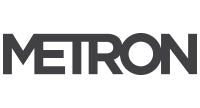
Respiratory Protection was the 4th most frequently cited standard following 32,020 inspections of US work sites by OSHA in fiscal year 2018 (10/17-9/18)
- OSHA estimates that 5 million workers in 1.3 million workplaces throughout the country are required to wear respirators
- Flouting the OSHA Respiratory Protection Standard (29 CFR 1910.134) likely results in hundreds of deaths and thousands of illnesses annually
- Here are some basic definitions from OSHA's General Respiratory Protection Guidance for Employers and Workers:
What is a respirator?
A respirator is a device that protects you from inhaling dangerous substances, such as chemicals and infectious particles. Respirators are among the most important pieces of protective equipment for working in hazardous environments. Selecting the right respirator requires an assessment of all the workplace operations, processes or environments that may create a respiratory hazard. The identity of the hazard and its airborne concentrations need to be determined before choosing a respirator. This assessment should be done by experienced safety personnel or by an industrial hygienist. There are several different types of respirators, as described below.
How do respirators work?
Respirators work by either filtering particles from the air, chemically cleaning (purifying) the air, or supplying clean air from an outside source.
Particulate Respirators
Particulate respirators are the simplest, least expensive, and least protective of the respirator types available. These respirators only protect against particles (e.g., dust). They do not protect against chemicals, gases, or vapors, and are intended only for low hazard levels. The commonly known "N-95" filtering facepiece respirator or "dust mask" is one type of particulate respirator, often used in hospitals to protect against infectious agents. Particulate respirators are "airpurifying respirators" because they clean particles out of the air as you breathe.
Particulate respirators:
Filter out dusts, fumes and mists.
Are usually disposable dust masks or respirators with disposable filters.
Must be replaced when they become discolored, damaged, or clogged.
Examples: filtering facepiece or elastomeric respirator.
Disposable face mask particulate respirators from X1 Safety
Chemical Cartridge/Gas Mask Respirator
Gas masks are also known as "air-purifying respirators" because they filter or clean chemical gases out of the air as you breathe. This respirator includes a facepiece or mask, and a cartridge or canister. Straps secure the facepiece to the head. The cartridge may also have a filter to remove particles.
Gas masks are effective only if used with the correct cartridge or filter (these terms are often used interchangeably) for a particular biological or chemical substance. Selecting the proper filter can be a complicated process. There are cartridges available that protect against more than one hazard, but there is no "all-inone" cartridge that protects against all substances. It is important to know what hazards you will face in order to be certain you are choosing the right filters/cartridges.
Chemical Cartridge/Gas Mask respirator:
Uses replaceable chemical cartridges or canisters to remove the contaminant.
Are color-coded to help you select the right one.
May require more than one cartridge to protect against multiple hazards.
Reusable face mask respirators & cartridge filters from X1 Safety
Powered Air-Purifying Respirator (PAPR)
Powered air-purifying respirators use a fan to draw air through the filter to the user. They are easier to breathe through; however, they need a fully charged battery to work properly. They use the same type of filters/cartridges as other air-purifying respirators. It is important to know what the hazard is, and how much of it is in the air, in order to select the proper filters/cartridges.
Air supplied respirators from X1 Safety
Learn more about the basics of respiratory protection PPE from OSHA's General Respiratory Protection Guidance for Employers and Workers, including:
- What respirators are made from and what features are available
- Filter classifications and color coding
- Cautions/limitations/effectiveness
- And an answer to one of the most common questions we get: Can I wear a respirator if I have a beard? (Answer: Anything that prevents the face mask from fitting tightly against your face, such as a beard or long sideburns, may cause leakage. If your respirator requires a tight fit, you must trim back your beard so that it will not interfere with the face-facepiece seal. If your respirator is a loose-fitting (hooded) positive pressure respirator (e.g., a powered air-purifying respirator, PAPR) then you may have a beard.)
Links:
-
Commonly Used Statistics | United States Department of Labor, Occupational Safety and Health Administration
-
Respiratory Protection | United States Department of Labor, Occupational Safety and Health Administration
-
OSHA Bulletin: General Respiratory Protection Guidance for Employers and Workers | United States Department of Labor, Occupational Safety and Health Administration
![banner-bottom]()









